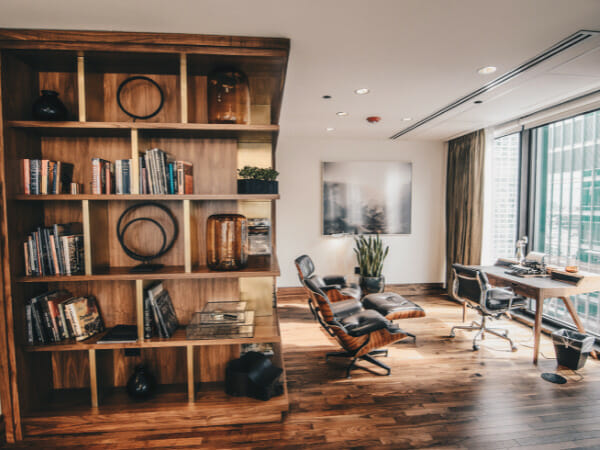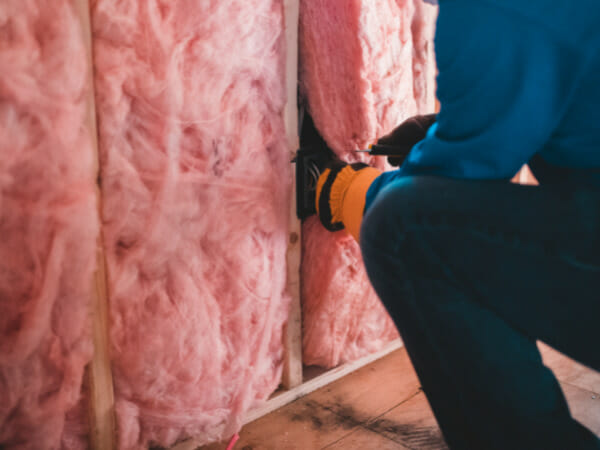How to Soundproof a Room
Noise pollution is perhaps one of the most significant problems with large cities. The consistent hustle and bustle of cars, trucks, and people can hardly be shut out, even at night.
Anyone who has lived in a major city will tell you: unwanted noise is annoying and usually comes when you don’t want it or can’t stop it.
Soundproofing, however, solves these noise-related issues.
What is soundproofing?

The process of soundproofing a room essentially reduces (or removes) any noises from the surrounding areas. It’s also possible to soundproof an entire house and even an entire building.
What’s important is deciding how much sound you need to block out and then soundproof at that level. To further understand how soundproofing works, you need to understand how sound works.
What is sound?
Sound is what you hear when certain invisible waves reach your ear. These waves can pass through gas which is why you’re able to hear sounds right now (as you’re breathing air).
They can pass through liquid as well, which is why you hear sounds while underwater. The real problem, however, is the ability for sound to pass through solid (like houses) and cause noise.
Types of noise
There are two types of noise, notably airborne and impact. Airborne noise is carried through the air like people talking or a telephone ringing. When two solids come together, impact noise occurs.
Car tires on the road, a door closing, and a carpenter hammering at a nail are all examples of impact noise. With sound’s ability to become noise, the only way to prevent it and create some peace and quiet is soundproofing.
How much soundproofing would you need?
The first key step is determining why you need soundproofing and what sounds you need to keep out (or in). If you lived near the woods where the wind rustled the leaves, you might not bother with stopping that sound because you might not see it as noise.
If it disturbed you, all you would need is a little soundproofing. However, if you lived beside a stadium, you would certainly need a much higher level of soundproofing. So, determining the sounds you’re aiming to eradicate is an important step in decision-making.
Another factor to consider is whether you plan on keeping noise out or in. If you own a music studio, your electric guitar chords will frustrate the lovely old couple that lives beside you. Soundproofing to keep the sound in will certainly be the most appropriate route to being a good neighbor.
How to Soundproof a Room in These Simple Steps
There are many ways to sort out your room soundproofing. One of the simplest methods to block out quieter airborne noise would be sound absorbers. Dealing with impact noise, however, will require a lot more work. So how would you go about properly soundproofing an entire room?
Read More: What Is House Hacking?
Install sound curtains
How To #Soundproof My Bedroom – Quiet Curtains Blog: https://t.co/9imgUKswfu
— Quiet Curtains (@QuietCurtains) December 14, 2016
With some investment into room soundproofing, you can start with getting sound curtains installed on your windows and doors. They are not too expensive, and they help deaden the sounds that filter into your room.
A great alternative would be very thick blankets, as these offer a similar level of insulation. Sound is absorbed by soft and thick material like blankets so that you can use spare blankets as make-shift curtains.
Set up bookcases or bookshelves
Bookcases add to the thickness of your wall and can be a rather effective sound barrier. There’s a reason for this: bookcases filled with books will absorb sounds, thanks to the thickness of the books.
If you want to use bookshelves to absorb sound, floor-to-ceiling lengths are perfect, but you’ll have to fill them with books. The upside to this is having a massive library and a quieter place to read those books!
Use vibration insulation pads.
If you’re room soundproofing because you want to set up a studio, ensure you get vibration insulation pads for equipment like your speakers and subwoofers. These pads will ensure that you never disturb another neighbor with your deep bass vibrations that rattle their teacups.
Mount any speakers on top of vibration insulation pads to keep the vibrations in. You could use very thick foam to make it yourself, but it might be best to purchase one simply.
Cover the gaps!
Sound just needs a little space to get out of where it shouldn’t leave and get into where it shouldn’t enter. Often enough, most doors have gaps under to make it easier to open and close the door, of course.
However, for soundproofing, those gaps are going to have to go. You can seal the gaps by installing a door sweep at the bottom of the door. Other tools that could help are a draft stopper or even a seal.
Rug the room
The right rug can help make soundproof a room, perfect for when everyone in your house is trying to work at the same time 🤦 Head to https://t.co/0nnKqiuyGq Living Room for more easy ways to soundproof a room.https://t.co/CRdoScAzfY#REALTORdotca #soundproofing #DIY pic.twitter.com/ww9f0ErVJ3
— REALTOR.ca (@REALTORdotca) March 8, 2021
Rugs are trendy and fashionable again, which is a good reason to invest in them. However, you don’t just want any type of rug. The thicker, or more layered, the rug is, the more sound waves it can absorb.
You want to get very thick rugs and layer them one on top of the other to improve how well your room keeps out sound. Installing these thick carpets will make it harder for feet (or paw) sounds to disturb you.
Invest in acoustic windows
Windows can often rattle at the sounds that emanate from the environment. If a plane is flying overhead or a nearby truck is revving up an incline, the sound waves might vibrate your windows, causing the rattling sounds.
This is why you should seriously contemplate purchasing acoustic windows. The way they’re constructed allows them to hold back outside sounds, which would be a perfect addition to your room soundproofing.
Install ceiling mounted drapes
Wherever noise comes through, the most could do with an extra layer of protection: drapes. Thick, flowing drapes will absorb sounds from the busy street that gets through your walls. If you can pinpoint the area most noise emanates from, using drapes can be a great way to improve that area while making your room look great.
Purchase soundproofing foam
Thick foam for your walls can dramatically improve how much sound is absorbed and kept inside your room. Although this is one of the most important steps, it also happens to be the most expensive.
Getting soundproofing foam for your walls can require purchasing wall panels with inbuilt foam to attach to your existing walls. With carpets and rugs covering the floor, getting soundproofing foam to cover the ceiling will help to keep out sounds from above. If you’ve got a neighbor living above you, soundproof foam on your ceiling will minimize the sound of their footsteps.
Related Articles
Conclusion
There are many more tips and ways to set up room soundproofing, depending on how much noise gets into the room. A room in a less noisy area will require fewer materials to be soundproof, while a room in the heart of a busy city would need so much more.
Other tips include setting up background noise in your room to minimize airborne noises which would otherwise disturb you. Some people enjoy the soft sounds of classical music in their background while they work or sleep; others prefer death metal. Playing your favorite music can help keep out any extra sounds.




